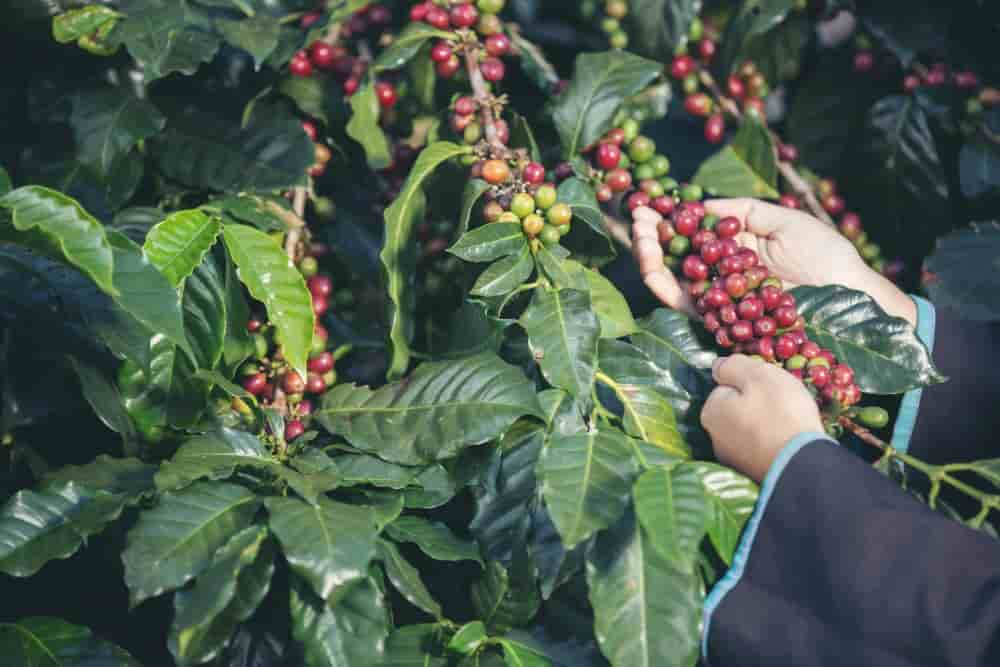Guess what? Ethiopia is the largest coffee producer in Africa and the fifth largest exporter of Arabica coffee in the world. Coffee is Ethiopia’s top export, making up 30-35% of the country’s export earnings. Most of the coffee grown in Ethiopia is Arabica. By the end of 2024, it’s expected that Ethiopia will produce 8.35 million 60 kg bags of coffee, which is about 501,000 metric tons.
Did you know that the coffee industry is the lifeblood of Ethiopia’s economy? It plays a huge role in the lives and culture of its people. In fact, around 35% of the population depends on the coffee industry for their livelihood. For the coffee year 2023, Ethiopia produced an impressive 8.27 million 60 kg bags, or 496,200 metric tons, of coffee.
Here’s an interesting fact! Coffee in Ethiopia is not just a crop; it’s a part of their cultural heritage. The traditional coffee ceremony is a notable social event. Friends and family gather to enjoy freshly brewed coffee, creating a sense of community and togetherness. How amazing is that?
In Ethiopia, Ethiopian coffee beans is produced in three main ways:

- Forest Coffee: This type of coffee grows wild in the forests. Local people gather the coffee cherries from these naturally growing plants. Isn’t it amazing that such high-quality coffee can come from the wild?
- Garden Coffee: This is the most common method in Ethiopia. Small farmers grow coffee trees in their gardens along with other crops. They measure their coffee by the number of trees rather than the size of the land. Families pick the coffee cherries from trees that grow near their homes. Imagine having your own coffee garden right in your backyard!
- Plantation Coffee: A smaller amount of coffee comes from large farms or estates. These larger operations produce some of the finest coffee in the world!
Traditionally, Ethiopian coffee was processed using the dry method. In this method, the coffee cherries are spread out under the sun to dry. However, the wet processing method is becoming more popular. In wet processing, the coffee cherries are pulped to remove the outer layer, then fermented and washed before drying. Now, over 50% of Ethiopian coffee is processed this way. Wet processing helps to bring out the delicate, floral flavors that make Ethiopian coffee unique.
Wet processing helps to bring out the delicate, floral flavors that make Ethiopian coffee unique. Did you know that wet processing can make the coffee taste brighter and cleaner? It’s amazing how this method can highlight the special flavors of each coffee bean! The process needs a lot of water and careful attention, making it a true art form. How cool is that?
Main Coffee-Producing Regions in Ethiopia
Sidamo
- Location: South of Lake Awasa in the Rift Valley.
- Area: Over 20 different administrative areas, with always changing climates and altitudes.
- Climate: Perfect for coffee. Altitudes between 1,500 and 2,200 meters. Good rainfall, perfect temperatures, and fertile soil.
- Processing: About 60% of the coffee is washed. But some are also sun-dried.
- Production: There are over 50 cooperatives and many private buying stations with over 200 washing stations. That’s a lot of teamwork!
- Taste: Mercanta looks for energetic acidity, refined sweetness, floral and citrus notes. And of course an elegant aftertaste in Sidamo coffee. Imagine tasting such a yummilicious cup!
Yirgacheffe
- Location: Part of the Sidamo region in southern Ethiopia. Mostly known for its high-quality coffee. So of course it has its own trademark.
- Climate: Coffee grows at altitudes of 2,000 meters and above. The higher, the better!
- Production: 26 cooperatives represent around 43,794 farmers and 62,004 hectares of garden coffee. That’s a huge community effort!
- Processing: Mostly washed, with some sun-dried coffee.
- Taste: Known for exquisite, washed coffees. These coffees are truly special!
Lesser-Known Coffee-Producing Regions

Harrar
- Location: Eastern Ethiopia.
- History: Known for high-quality coffee since the 19th century.
- Production: Mostly wild native trees on small farms.
- Processing: Dry-processed and classified as longberry (large), shortberry (smaller), or Mocha (peaberry).
- Taste: Flavors include blueberry, banana, strawberry, bubblegum, and sometimes mint. Heavy-bodied and often used in espresso blends due to its fruity notes.
Limu
- Location: South-West Ethiopia.
- Altitude: Between 1,100 and 1,900 meters.
- Taste: Known for sweet, spicy/winey flavor and balanced body.
- Processing: Washed Limu coffee is considered one of Ethiopia’s best highland-grown coffees.
- Beans: Medium size, distinctive rounded shape, and green color.
Djimma
- Location: Southwest Ethiopia.
- Production: Produces a large amount of Ethiopia’s coffee, mostly commercial grade.
Oh yes, Ethiopia is a big name in the coffee world! With different ways of growing coffee and regions like Sidamo and Yirgacheffe offering amazing flavors, Ethiopia is a top coffee producer and exporter. The variety of beans and the coffee tradition makes it extraordinary in the global coffee market. Isn’t that interesting?
